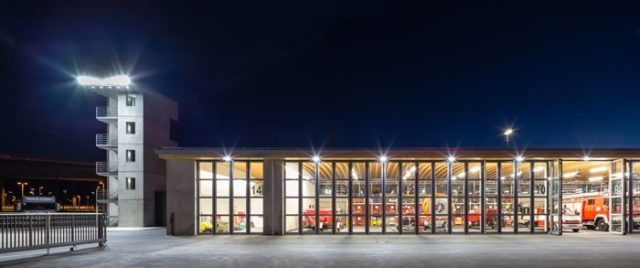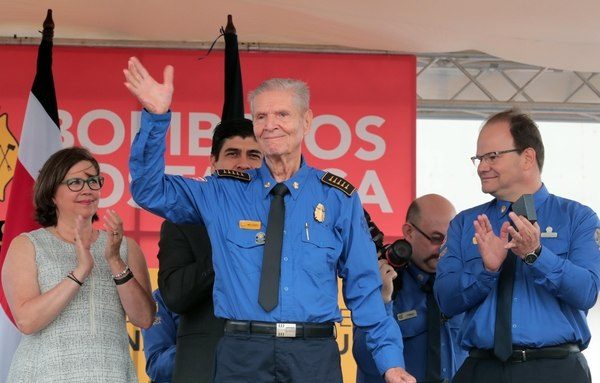In March of next year (2020), the 2 new metropolitan fire stations must be completed, located 100 meters north of the station to the Pacific and diagonal to the Caribeños bus station, in San José.
One of the most important features of the buildings, valued at US$ 25 million (about ¢ 15,000 million), will be the reduction of the ecological footprint, since they will have solar or photovoltaic panels that will help generate clean energy, solar water heaters, and LED lighting. The design of the buildings also includes the best use of natural light, so that the environmental bill is the least possible.

Héctor Chaves, general director of the Fire Department, said that to reduce the carbon footprint also combine variables such as rainwater collection in a tank with a capacity of 300,000 gallons, as a reserve so that the extinguishing units can be replenished during the attention of a fire.
Rainwater will also be used for sanitary services, plant irrigation and unit washing. Both buildings can generate electricity and have drinking water for up to two consecutive weeks, without depending on public or private services.
“In the case of an earthquake, where the aqueducts can fail, we need a place to replenish and this point will also serve in such a situation”, he said. “Above all, it has a vision to cover the needs of the next 50 years, so that the services that the capital requires will be satisfied from here”, he added.
Another way to make the most of water is that firefighters have changed in recent years the system of hose nozzles, as well as the application of new fire extinction techniques that seek to use less water.
“One would like our country to have special networks of non-potable water, so as not to have to use clean water, but it is something that the country is still far from achieving, as it does in other nations where there are only networks for firefighters”, he explained.
He affirmed that they will continue searching for all possible techniques to minimize environmental impact. The seismic resistance of the buildings will be of the highest and safest category at present.
Faster trips
Another objective to define the place where the new stations will be, seeks to reduce arrival times to emergencies. The new venues will have outputs for firefighters’ vehicles through different streets and avenues, contrary to what happens with the 3 current venues that only have one exit and highly congested roads.
In addition to the above, Héctor Chaves said that when San José celebrates a festival such as the end of the year or the carnival, the closure of the streets threatens the rapid response to emergencies.
That will be solved in part with the 2 new stations that will have the capacity to house large extinguishers in opposite points of a city that concentrates old buildings, such as the National Theater, the Legislative Assembly and others of vertical design where a large number of people work the Costa Rican Social Security Fund (CCSS).
The new structures will merge neighborhood stations Mexico, founded in 1946; Central, founded in 1914; and the Luján neighborhood, founded in 1947. The location of these 3 precludes the expansion of facilities and the capacity to meet the growing emergencies.
The contract is in charge of the company Diseño, Ingeniería, Arquitectura (Dia SA) that has already begun to demolish the old building of the Cervecería Traube, in El Carmen neighborhood of San José, where the northern station will be and the removal of lands in the southern metro station.
New method of making works
The financing is part of a new regulation of the General Securities Superintendency (Sugeval), which allowed the Fire Department to raise capital through the issuance of securitization bonds through securities of the National Insurance Institute (INS Valores). These funds will be administered by a National Bank trust.
The president of the Board of Directors of the National Bank, Jeannette Ruiz, praised the novelty of financing public works with a non-traditional mechanism, which also reactivated the economy and the stock market through the placement of these titles to the public.
Likewise, it helps to finance the new works by collecting 4% of the premiums of all the insurance sold in the national territory, as well as 1.75% of the bills over 100 kilowatts, as it is established by Law N° 8992.

During the act of laying the first stone, the President of the Republic, Carlos Alvarado, highlighted the visionary work of the Fire Department, by promoting sustainable projects, whose ultimate goal is the protection and benefit for the Costa Rican population. Alvarado handed out a pin and a parchment as a tribute to Col. Franklin Meléndez Campos, for his 72 years of service as a firefighter.

